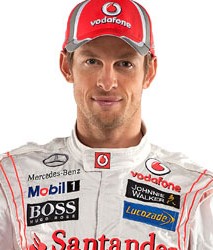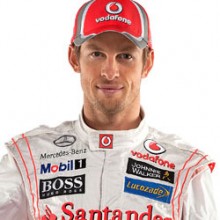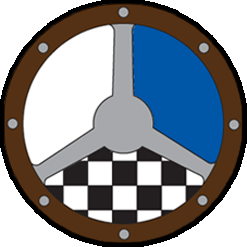Ask a pro
Receive advice directly from today’s top stars
The mail bag is full!! Thanks for all the great questions for Online Driving Instructor Jenson Button. His answers will be posted daily through Thursday of this week as practice for the British Grand Prix begins on Friday.


Jenson Button
F1 World Champion
After an outstanding career in karts, Jenson Button made a meteoric rise through the junior open-wheel ranks, starring in Formula Ford and Formula 3 before being snapped up by the Williams Formula 1 team in 2000 at the age of 21. Driving for Honda, he claimed a brilliant maiden F1 victory in 2006 in treacherously wet conditions at the Hungarian Grand Prix. Button’s F1 career appeared to stutter when Honda withdrew from the sport abruptly at the conclusion of the 2008 season, but he remained with the same nucleus of people competing under the Brawn Grand Prix banner, and was finally provided with a car worthy of his talents. He stepped up to the plate by winning five of the first six races and went on to claim the 2009 FIA Formula One World Championship. Button switched to the Vodafone McLaren Mercedes team for the following year and finished second in the standings last season. His current F1 record includes 13 wins and 45 podiums, and he is widely acclaimed as one of the sport’s most accomplished stars.
Jenson Button answers your questions!
-
Bob Moeller
The apex of a corner is the most important reference for a race car driver, but the manner in which they position their car at the apex is obviously very important. Therefore, do you brake early and turn in early, or do you brake late and turn in late? Do you use the same technique for all the different types of corners you will encounter in a Formula One car?




“We all drive differently and every corner is different. It depends on the angle or how tight the corner is, the speed, and the car’s balance.”
SAFEisFAST Video: Braking
-
Edgar Whorton
What is the maximum g-force in a corner that you have experienced and where?




“It’s probably about 6g – but not for a long period of time. At Mugello, during testing there in the 2000s.”
SAFEisFAST Video: Strengthening the Neck
-
Ethan Bass
I am good at keeping my tyres in better condition than most at the end of the race. This allows me to race well and be competitive. But my results are being hindered badly by my qualifying performance. I am regularly a whole second off pole, leading me to only getting a grid position in the middle of the pack which also means I sometimes get caught up in accidents. Is there something I need to do specifically when it comes to the ultimate qualifying lap?




“The race is more important than qualifying and it’s better to set the car up for the race. Obviously, in a formula where it’s very difficult to overtake, you need a balance between qualifying and the race. But you’re right, if you’re starting further back there’s more chance of being in accidents.”
SAFEisFAST Video: Overtaking
-
Jeremy Baldi
I have always been very impressed by your smooth driving style and calmness during a race. Do you have any tips on how to adopt or hone this style? Is there anything you do off the track to hone your skills in smoothness?




“Not really – I do a bit of reaction work in the gym.”
SAFEisFAST Video: Is Smooth Fast?
-
Jonathan Sugianto
What do you regard as the best moment of your career and why?




“Winning the world championship – because that’s what you aim to do as a young kid. But also winning specific grands prix – every grand prix I’ve won has been special to me, especially last year in Japan. It was an emotional win, and Suzuka is a circuit I really love.”
-
Zeeshan
What is your favorite track?




“Probably Suzuka, Spa or the old Silverstone.”
-
Emma Spalding
How do you maintain your physical fitness in between races?




“I do a lot of cycling, running, swimming, a lot of core stability work. I love being outdoors and I think that approach helps you mentally in the car.”
SAFEisFAST Videos: Driver Fitness
-
Henry Hurst
I have read about how physical the modern F1 cars are to drive, but how important is the mental side of the sport?




“The mental side is just as important as the physical side. When you’re physically fit, you feel mentally stronger. You need to work on both aspects, and you need to successfully manage your time and your focus. Feeling relaxed is both a mental and physical benefit.”
SAFEisFAST Video: Mental Preparation
-
Oliver W
What do you think of young driver schemes such as the FIA Institute’s Young Driver Academy? How important is it to get into one of these programmes to progress in the sport?




“I think they’re great – they’re something that we missed when I was growing up. And I think there might be more British drivers in Formula 1 right now if we’d had help through the junior ranks in the early days.”
For more information, visit fiainstitute.com
-
Zeeshan
Do you find it more satisfying to completely dominate a race from pole or from having to work your way to victory from farther back in the field?




“It’s always nice leading from the front and winning the race, but it’s more fun fighting for the victory.”
-
Richard Fan
Hi Jenson. I’m a huge McLaren fan and thank you so much for taking time to answer our questions. Do you think certain tracks favor a smooth and calm driving style while others favor a more aggressive style? If so, which tracks do you think favor your style?




“Yes, I do. I think certain circuits require a more aggressive style – but you just have to adapt.”
SAFEisFAST Videos: Advanced Driving Techniques
-
Camren Kaminsky
With the amount of knowledge you have gained throughout your career, if you could go back in time, what advice would you give to yourself as you were climbing the ranks of junior motorsport?




“I wouldn’t really give myself any advice – I’d probably have liked some more experience in single-seaters before I came into F1, but you can’t really turn down an opportunity when Frank Williams asks if you want to drive for him. Actually, I’d probably learn a bit more about contracts…!”
-
Luke Walsh
What is your personal order of adjusting your car’s setup on a GP weekend? Are you involved from the start or do your engineers apply a base setup before you are included in the discussion?




“Yes, I’m involved from the start because I do the simulator work together with my engineers ahead of the grand prix weekend. We improve the set-up with the simulator and arrive at the circuit with a basic set-up – and that’s what we adapt throughout practice.”
SAFEisFAST Video: Working with an Engineer
-
Michael Martin
You have been known as a very smooth race driver. Can you describe why you do it and what are the advantages to being smooth?




“It’s something I started learning when I was a kid: in karting, you race with such small engines and you have to keep the revs high to maintain your minimum speed through the corners. That’s the quickest way to go racing. Also, I was very influenced by watching Alain Prost on TV in the 1980s.”
SAFEisFAST Video: Is Smooth Fast?
-
Rio Flores
What was the hardest thing you had to accomplish so that you could move up to the Formula 1 World Championship?




“Understanding a car mechanically was something I didn’t really know and that hurt me in my first two years in Formula 1.”
SAFEisFAST Videos: Race Car Systems and Dynamics
-
Sean Craddock
You are known for being very gentle on your tyres. Do you like your car to have more oversteer than understeer or vice versa, and why do you find that beneficial?




“I normally set the car up with a bit of understeer so that I can look after the rear tyres. But sometimes, if you set the car up with too much understeer you end up hurting the rears anyway because your positioning is wrong at the exit.”
SAFEisFAST Video: Tire Management
-
Adam Gatto
While you were at school did you always think you could become a racing driver or did you ever see yourself taking a different career path?




“I was pretty obsessed with motorsport from a very young age. My dad started taking me karting when I was eight and I already knew I wanted a career in professional motorsport before I left school, so I was pretty focused on becoming a racing driver. But I still think it’s important to stay focused at school – having a dream is a fantastic thing, but there are no guarantees in life, so you can’t afford to neglect your studies.”
-
Alan Z
Jenson, can you talk about vision and particularly how you use your primary and peripheral vision when racing? Thank you.




“Yes we do use our peripheral vision, because we don’t want to be sat in the cockpit looking left or right all the time. It’s easier to use your peripheral vision to glance into the mirrors. You can always tell when a racing driver uses a Batak board as they are very, very good at it – because they use their peripheral vision a lot. It’s great practice.”
-
Anonymous
What do you find to be the best way to learn a new track?




“We have the simulator – which is useful for set-up, but also for learning new tracks. But you mentally file away every corner and you just draw upon that resource when you learn a new corner. So you might remember a similar, high-speed, fourth-gear corner and use that as the basis for your approach, but, for instance, it might have a tightening apex and a big kerb at the exit, so you’ll draw on other experiences to fit that into your profile. But you learn them all quite quickly.”
SAFEisFAST.com Video: Learning a New Track
-
Anonymous
In terms of relative performance, are there any similarities between an F1 car and a top-level racing kart?




“Yes. Obviously, you don’t have the levels of downforce in a kart, but you really do feel the speed because you’re so close to the ground. And racecraft is the same in karting as it is in Formula 1: it’s just that you’re driving an F1 car at much greater speeds. And against better drivers – supposedly!”
SAFEisFAST.com Video: Karts to Cars
-
Anonymous
How do you compensate when a car is not working for you? Are the techniques the same in F1 as when you were climbing the ladder in the junior classes?




“It’s a little bit different because you have a lot more to play with: in Formula 1, if you say you need a component, the team will evaluate and try that component in the simulator before sticking it on the car. In junior formulae, you’re very limited by what you can change on the car.”
SAFEisFAST.com Video: Race Car Systems and Dynamics
 Road Racing Drivers Club
Road Racing Drivers Club
 Share
Share







